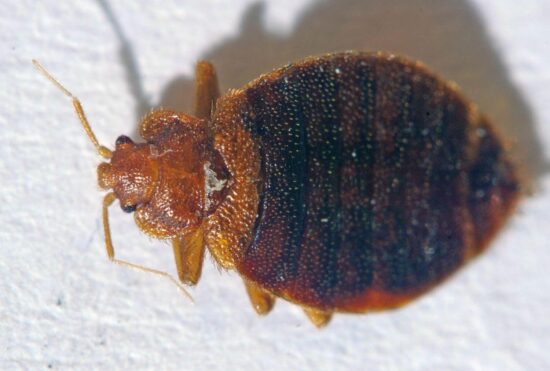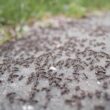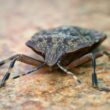Finding bed bugs in your couch can be a nightmare, but catching them early makes all the difference. Couches are perfect hiding spots for these tiny pests because they provide warmth, darkness, and easy access to sleeping humans. Unlike beds, people don’t always think to check their couches for bed bugs regularly, which gives these critters time to multiply and spread.
Learning how to check for bed bugs in your couch properly can save you from a much bigger problem down the road. The key is knowing what to look for and using the right techniques to find these sneaky bugs before they take over your home.
1. Get Your Inspection Tools Ready
Before you start checking your couch for bed bugs, you’ll need to gather some basic tools. Most of these items are probably already in your home, and they’ll make your inspection much more effective.
Here’s what you’ll need:
Essential Items:
- A bright LED flashlight with fresh batteries
- A magnifying glass (bed bug eggs are tiny at just 1mm)
- An old credit card or gift card
- Latex or rubber gloves
- Several ziplock bags
- Tweezers
- Alcohol wipes or baby wipes
- A can of compressed air
Why These Tools Matter: The flashlight helps you see into dark cracks and crevices where bed bugs love to hide. The magnifying glass is crucial because bed bug eggs are incredibly small and easy to miss. The credit card becomes your probing tool for getting into tight spaces that your fingers can’t reach.
Cut your old credit card into a long, thin triangle shape. This makeshift probe will help you check narrow gaps and push into seams where bed bugs might be hiding.
- Kill bed bugs and bed bug eggs
- Use spray as a spot treatment around bed frames, mattress seams/tufts/folds, and baseboards
- Kills even the toughest bed bugs
- The continuous spray Comfort Wand easily gets into hard-to-reach areas
2. Look for the Tell Tale Signs
When checking your couch for bed bugs, you’re looking for several different types of evidence. Bed bugs leave behind various clues that can help you identify an infestation even if you don’t see the actual bugs.
What to Keep an Eye Out For:
Live Bugs: Adult bed bugs are about the size of an apple seed and reddish-brown in color. They’re flat when they haven’t eaten recently but become round and darker after feeding. Baby bed bugs are much smaller and can be almost see-through.
Eggs and Shells: Bed bug eggs look like tiny pearls with a small dark spot (the eye). They’re usually found in clusters in protected areas. You might also find empty eggshells after the bugs have hatched.
Dark Spots: These are bed bug poop, and they look like small ink dots from a pen. Fresh spots might smear when you touch them, while older ones become permanent stains.
Bloodstains: Small reddish-brown spots on your couch fabric could be from bed bugs that got squished after feeding.
Shed Skins: As bed bugs grow, they shed their outer skin. These empty shells are usually pale yellow or brown and translucent.
3. Use the Flashlight Method
The flashlight method is one of the most important techniques for how to check for bed bugs in your couch. Bed bugs are experts at hiding in dark places, so good lighting is essential.
Step by Step Process:
Start by removing all cushions, pillows, and throws from your couch. Set them aside in a clean area where you can inspect them separately.
Use your bright LED flashlight to look into every seam, fold, and crevice. Pay special attention to areas where the fabric meets the wooden frame, around zippers, and along piping or decorative trim.
Check the tags on your cushions and the main couch body. Bed bugs often hide near these areas because they provide small, protected spaces.
Look inside the cushion covers after removing them. Many couch cushions have removable covers that can be unzipped, providing another hiding spot for bed bugs.
Don’t forget to check the corners where different pieces of fabric come together. These junction points are prime real estate for bed bugs.
4. Try the Credit Card Technique
Your homemade credit card probe is perfect for checking spaces that are too narrow for your fingers or too deep for your flashlight to illuminate properly.
How to Use Your Probe:
Insert the triangular end of your credit card probe into seams and cracks. Gently scrape along the edges and corners. If bed bugs are hiding in these spaces, this action will force them out into the open.
Pay special attention to areas where the fabric attaches to the wooden frame. These spots often have small gaps that are perfect for bed bugs.
- Kill bed bugs and bed bug eggs
- Use spray as a spot treatment around bed frames, mattress seams/tufts/folds, and baseboards
- Kills even the toughest bed bugs
- The continuous spray Comfort Wand easily gets into hard-to-reach areas
Use a sweeping motion with your probe rather than just poking. This technique is more likely to disturb any hiding bugs and make them visible.
Check the spaces between cushions and the main frame of the couch. Even small gaps can house bed bugs and their eggs.
If you feel resistance while probing, take a closer look. It could be debris, but it might also be a cluster of bed bugs or eggs.
5. Check the Bottom of Your Couch
The underside of your couch is like a bed bug highway. It’s dark, protected, and rarely disturbed, making it an ideal hiding spot. This step is crucial when learning how to check for bed bugs in your couch thoroughly.
Flipping and Inspecting:
You’ll probably need help turning your couch over, especially if it’s large or heavy. Be careful not to damage your floors or the couch itself.
Once flipped, remove any dust cover fabric underneath. Many couches have a thin fabric layer on the bottom that can be easily removed or pulled aside.
Use your flashlight to check all the wooden frame joints and corners. Look for any dark spots, live bugs, or shed skins.
Inspect the springs and support mechanisms. These areas provide plenty of hiding spots and are rarely cleaned.
Check for any loose or torn fabric areas. Bed bugs can squeeze through surprisingly small openings.
Don’t forget to look at the legs and where they attach to the frame. These junction points are common hiding spots.
6. Listen for Clicking Sounds
This might sound strange, but bed bugs can actually make noise. When you press down on areas where they’re hiding, you might hear faint clicking sounds.
The Audio Method:
Press down gently on different cushioned areas of your couch while listening carefully. The clicking sounds come from crushing bed bug eggs and shed skins.
Work systematically across the entire couch, pressing and listening as you go. This method works best in a quiet room.
Pay attention to areas that feel different when you press them. If one section feels more springy or has a different texture, it might be worth a closer look.
The sounds are usually faint, so you might need to put your ear close to the couch surface. Some people even use a stethoscope for this method.
If you hear clicking sounds, mark those areas and inspect them more closely with your flashlight and magnifying glass.
7. Check for Bad Smells
Bed bugs produce a distinctive odor that becomes stronger as infestations grow. Learning to identify this smell is another important part of checking your couch for bed bugs.
What Bed Bug Smells Like:
Many people describe the bed bug smell as musty and sweet, similar to raspberries or coriander. Others say it smells like wet towels or moldy laundry.
The smell comes from bed bug pheromones, their waste, and dead bugs. As the infestation grows, the odor becomes more noticeable and unpleasant.
You might also notice a rusty smell, which comes from the iron in digested blood in their waste.
Where to Smell:
Get close to different areas of your couch and take a sniff. Pay attention to corners, seams, and areas where cushions meet the frame.
The smell is usually strongest in areas where bed bugs gather in large numbers, so focus on potential hiding spots.
Keep in mind that the smell might be faint in early infestations. By the time you can clearly smell bed bugs, the infestation has probably been growing for a while.
8. Look at the Area Around Your Couch
Bed bugs don’t just stay in your couch. They travel around looking for food and new hiding spots. Checking the surrounding area is an important part of how to check for bed bugs in your couch completely.
Six Foot Rule:
Inspect everything within about six feet of your couch. This includes other furniture, walls, and decorative items.
Check the baseboards and carpet edges near your couch. Look for dark spots or live bugs along these areas.
Examine any electrical outlets or light switches close to your couch. Bed bugs sometimes hide in these spots.
- Kill bed bugs and bed bug eggs
- Use spray as a spot treatment around bed frames, mattress seams/tufts/folds, and baseboards
- Kills even the toughest bed bugs
- The continuous spray Comfort Wand easily gets into hard-to-reach areas
Look at picture frames and wall hangings. Remove them from the wall and check behind them.
Don’t forget about curtains and window treatments. Bed bugs can hide in the folds and pleats of fabric.
Check other upholstered furniture in the same room. If your couch has bed bugs, they might have spread to chairs or ottomans nearby.
9. Test Stains with Alcohol
Sometimes you’ll find dark spots that might be bed bug waste, but you’re not sure. The alcohol test can help you figure out if those stains are from bed bugs.
How the Test Works:
Take an alcohol wipe or cotton swab dipped in rubbing alcohol and gently rub it on the suspicious stain.
If the stain dissolves and turns reddish-brown on your wipe, it’s likely bed bug waste. The color comes from digested blood.
Fresh bed bug droppings will smear and show the rust color more clearly than older stains.
Test multiple suspicious spots to get a better idea of what you’re dealing with.
What the Results Mean:
If several stains test positive, you probably have bed bugs. If only one or two spots react, you might have caught the problem early.
Remember that not all dark spots are bed bug waste. You might find regular dirt, food stains, or other debris that won’t react to the alcohol test.
Keep track of where you find positive results. This information will be helpful if you need to call a professional.
10. Make Simple Traps
You can create effective bed bug traps using common household items. These traps help you monitor for bed bugs and can catch them as they travel to and from your couch.
Building Your Trap:
Get two plastic containers of different sizes. Food storage containers work great for this. The smaller container should fit inside the larger one with space around the edges.
Wrap the outside of the larger container with masking tape or duct tape. This gives bed bugs a rough surface they can climb on.
Place the smaller container inside the larger one and glue or tape them together. Make sure there’s space between the walls of the two containers.
Sprinkle talcum powder (baby powder) into the space between the containers. The powder makes the surfaces slippery so bed bugs can’t climb out.
Setting Up Your Traps:
Place one trap under each leg of your couch. The couch legs should sit inside the smaller container.
Make sure your couch doesn’t touch the walls or any other furniture. This forces bed bugs to travel through your traps.
Check your traps every morning for several days. Any bed bugs trying to get to or from your couch will get caught.
Leave the traps in place for at least a week, preferably two weeks, for the best results.
11. Use the Flushing Method
Sometimes bed bugs hide so deep in cracks and crevices that you can’t see them even with a flashlight. The flushing method forces them out into the open.
How to Flush Bed Bugs:
Use a can of compressed air (the kind used for cleaning keyboards) to blow short bursts into cracks and seams.
Work systematically from one end of your couch to the other. Don’t miss any potential hiding spots.
Have a light-colored cloth or paper ready to catch any bugs that get blown out. This makes them easier to see.
Safety Tips:
Keep the compressed air can upright and use short bursts. Long sprays can be less effective and waste the product.
Work in good lighting so you can see any bugs that get flushed out.
If you see bugs, try to catch them in a ziplock bag for identification. Don’t just squash them, as you’ll want proof if you need professional help.
12. Check for Blood Spots
Blood spots on your couch fabric are another sign of bed bugs. These spots appear when bed bugs get squished after feeding.
Where to Look:
Check areas where people commonly sit or lie down. These are the spots where bed bugs are most likely to feed and potentially get crushed.
Look at armrests, seat cushions, and back panels. Use your magnifying glass to spot small stains you might miss otherwise.
Pay attention to seams and corners where blood might collect or be harder to clean.
What Blood Spots Look Like:
Fresh blood spots are usually bright red, while older ones turn brown or rust-colored.
The spots are typically small, about the size of a pinhead or smaller.
You might find them in clusters near areas where bed bugs hide.
Sometimes the spots are smeared, especially if someone sat on the couch after the bed bug was crushed.
13. Write Down What You Find
Keeping good records of your inspection is important, especially if you end up needing professional help. Documentation helps track the extent of the problem and whether it’s getting worse.
What to Record:
Write down the date and time of your inspection.
Note the exact location of any signs you find. Be specific about which cushion, which seam, or which area of the frame.
Take photos of any evidence you find. Use your phone to document stains, live bugs, or other signs.
Collecting Evidence:
If you find live bugs, capture them in a ziplock bag or small container. Label the container with the date and location where you found them.
Keep your photos organized and dated. This creates a timeline that can be helpful for professionals.
Make notes about any smells you noticed and where they were strongest.
Record the results of your alcohol tests and trap inspections.
14. Know When to Call for Help
While learning how to check for bed bugs in your couch is important, sometimes you need professional help. Knowing when to call experts can save you time and prevent the problem from getting worse.
Signs You Need Professional Help:
If you find multiple types of evidence (live bugs, eggs, stains, and smells), you probably have a significant infestation.
If you keep finding new signs even after cleaning and treating areas yourself.
If household members are getting bitten regularly, especially in areas near the couch.
If the smell is strong throughout the room, not just near the couch.
If you’re not sure what you’re seeing and need expert identification.
Professional Services:
Many pest control companies have specially trained dogs that can detect bed bugs with 98% accuracy. This is much better than human visual inspection alone.
Professionals have access to more powerful treatment methods and can treat your entire home if needed.
They can also provide advice on preventing future infestations and monitoring for any remaining bed bugs.
Final Thoughts
Checking your couch for bed bugs might seem overwhelming, but taking it step by step makes the process manageable. The key is being thorough and using multiple methods to make sure you don’t miss anything.
Remember that finding bed bugs early is much better than dealing with a large infestation later. Even if you don’t find any signs during your inspection, it’s worth checking again in a few months, especially if you’ve had bed bugs in your home before.
If you do find evidence of bed bugs, don’t panic. While they’re annoying and persistent, bed bugs can be eliminated with the right approach. Whether you handle it yourself or call professionals, the important thing is to act quickly before the problem spreads to other areas of your home.
Regular inspection and good prevention habits will help keep your couch and your home bed bug free. Stay vigilant, and don’t hesitate to get help if you need it.



